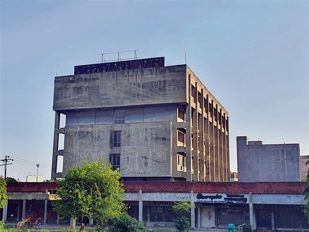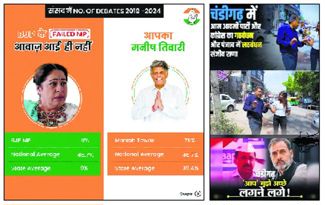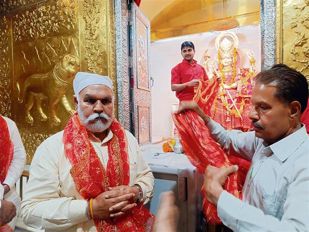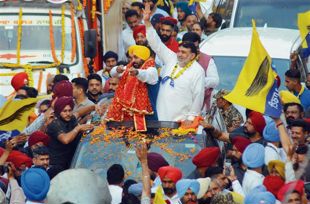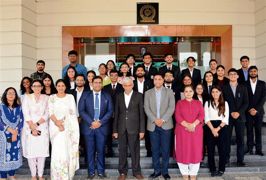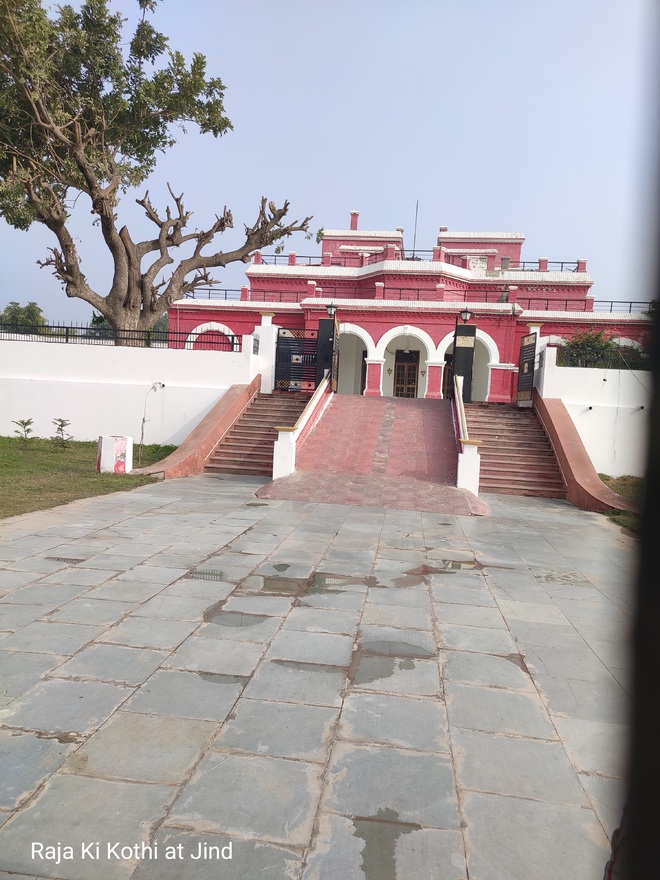
Raja ki Kothi
Satyawan Malik
The Rani Talab and the Raja ki Kothi of Jind and the Royal Rest House of Khunga are three vestiges of the Phulkian dynasty, the same family to which the Royal Houses of Patiala (Qila Mubarak and Moti Bagh Palace) and Nabha (Nabha House) belong.
But the Phulkian scions and monuments in Jind have only suffered neglect and dismantling unlike that of Patiala and Nabha.
After the rebellion against the Mughal emperor of Sirhind, Gajpat Singh, a great grandson of Chaudhary Phul Singh, became the first king of Jind in 1768, making Sangrur the capital. He built a large fort with lakhauri (thin burnt-clay) bricks in 1775. The title of Raja was bestowed upon him by the then Emperor Shah Alam in 1772. He even coined money in his own name. The mother of Maharaja Ranjit Singh was none other than Gajpat’s daughter Raj Kaur from Jind.
Raja Gajpat’s son Bhag Singh became the king in 1789. He was the first of all Cis-Satluj Phulkian chieftains to ally with the British and was succeeded by different dynasts — Rani Sobrahi Kaur, Raja Fateh Singh (1819-22), Sangat Singh (1822-34) and Sangat Singh’s cousin Sarup Singh (1837-1864). Sarup’s son Raja Raghubir Singh ascended the throne from 1864 to 1887. As his son Balbir Singh died at an early age, power went directly from Raja Raghubir Singh to his grandson Raja Ranbir Singh. Under Ranbir’s regency, the Jind Imperial Service Regiment was on active service during the World War-I. He was given a salute of 15 cannons. The state’s area (1259 square miles) extended to Dadri, Karnal, Safidon and Sangrur, the annual income being Rs30 lakh.
In March 1947, Ranbir Singh celebrated the longest reign (1887-1947) of the Phulkian clan. He signed the Instrument of Accession to the Dominion of India and died on March 31, 1948. When India got independence (August 1947), the government merged the Jind state with the newly-created state of Patiala and East Punjab State Union (PEPSU) on July 15, 1948. During the reorganisation of Punjab in 1966, Jind was allocated to Haryana.
Like Maharaja Bhupinder Singh (Captain Amarinder’s grandfather), Maharaja Ranbir Singh, too, was said to be a philanderer, an extravagant and a philanthropist.
He had 12 children from four wives. His son Tikka Sahib Rajbir Singh succeeded him as Maharaja of Jind in 1948. After Rajbir’s death in 1959 coronation went to his brother Jagatbir Singh, from Jagatbir to his son Kunwar Rambir, who married the present day Rani Inderjit Kaur. Rajbir’s son Satbir Singh, too, claims to be coroneted. Rambir, alias Baby, fond of cricket and cakes and ales, died in 1992 at 48. He had two sons — Gajraj Singh, who died at 35 in 2016 and Jagbir Singh Sidhu, who died at 39 in 2018. Jagbir is survived by his wife, a 14-year-old daughter and his mother Rani Inderjit Kaur, while Gajraj by his wife and his 6-year-old son Gunveer Singh. Gunveer is now the male heir and scion of the royal family. Amid rising family skirmishes, including longing Rani’s daughters-in-law being at daggers drawn and dwindling assets, the family lives in Raja ki Kothi built on Amarhedi Road. Inderjit Kaur unsuccessfully fought the Assembly election in 2004.
Two forts demolished
Two big forts, built in 1775, used to be at Jind till early ’90s: One was to the left of Rani Talab and the other to the right near Tanga Chowk. After demolishing the fort, a park is under-construction using about 3 acre land. On half acre, a Doordarshan Relay Centre has been set up. About two acres have been illegally encroached upon and constructed. The historical materials have been pilfered. Nothing remains here, where there used to be arms and prisoners. There was another fort adjacent to Rani Talab. This fort, too, was bulldozed in the ’90s to make room for the intrusive busy urban bazaar. No one cared to preserve these forts as historical monuments.
No sign of 3 main gates
Also, there used to be three main gates — Jhanjh Gate, Ramrai Gate and Safidon Gate — for the safety of the city. These three gates were connected by a boundary wall. At night, all three big gates were closed for safety purposes. Strict vigil was kept at night and no one was allowed to enter. Even today, the city is known by these three gates. However, any sign of these is untraceable.
Safeguard from defacement
Raja Raghubir Singh built Rani Talab with Bhuteshwar Mandir at its centre between 1875 and 1880 AD to the tune of the Golden Temple of Amritsar. A tunnel connected the fort with Rani Talab. As per beliefs, the queen used the tunnel to take a bath in the Talab. The night view of water-filled, circular Rani Talab is shimmeringly picturesque and stupefying. Only recently, the Haryana Government and the Kurukshetra Development Board (KDB) had spent lakhs on its beautification, lighting, fountains and upkeep, except water cleanliness. Still, it needs more care as it is marred by defacement, littering, stray cattle and monkey menace. Rani Talab, too, should be safeguarded as a monument.
Heritage lovers pained
The loss of the century-old Indo-Saracenic buildings in Jind is painful to heritage lovers. The future will be insipid without the present pluralistic appreciation, protection and conservation of the historic, cultural, architectural and artistic values. The Archaeological Survey of India (ASI) or the state government should forthwith declare Rani Talab, Raja ki Kothi and Khunga Kothi as protected monuments.
Raja ki Kothi deserves heritage tag
The princely state was once at the acme of power, but the same royal family no longer retains power or glory or assets. Indira Gandhi derecognised the rulers in 1971. Built in the early 1900s and located on the banks of Chetang Canal, the Raja ki Kothi, which commemorates the architectural vision of greatness, is now surrounded by many innocuous constructions. Even the street connecting it to the canal is still kuccha. Cracks are easily visible and the locally carried out repair work on walls and floors looks paltry. The Kothi deserves the heritage tag and needs to be normatively protected.
Utilise Khunga Kothi as museum or library
Khunga Kothi in Khunga village, 15 km away from Jind, was built on the left bank of Chetang Canal in the early 1900s by Raja Ranbir Singh. It was used as a sort of Rest House. Its imposing shape and style invokes landscape architecture with the principles of durability, usability and aesthetics. After Independence, the Kothi remained neglected. Almost all doors, windows and iron-grills have been removed and the walls defaced by addicts. It’s strewn with debris. In August 2017, Amit Khatri, the then Deputy Commissioner of Jind, had tweeted: “Khunga Kothi -— Erstwhile Royal Resthouse of Jind, renovation, and sustainable maintenance being planned.”
Its bats-fraught eerie condition still belies the tweet’s concern and intent. It could be converted into a museum or library or an archive.
(The writer is Associate Professor of English, Government College, Jind)
Join Whatsapp Channel of The Tribune for latest updates.





















